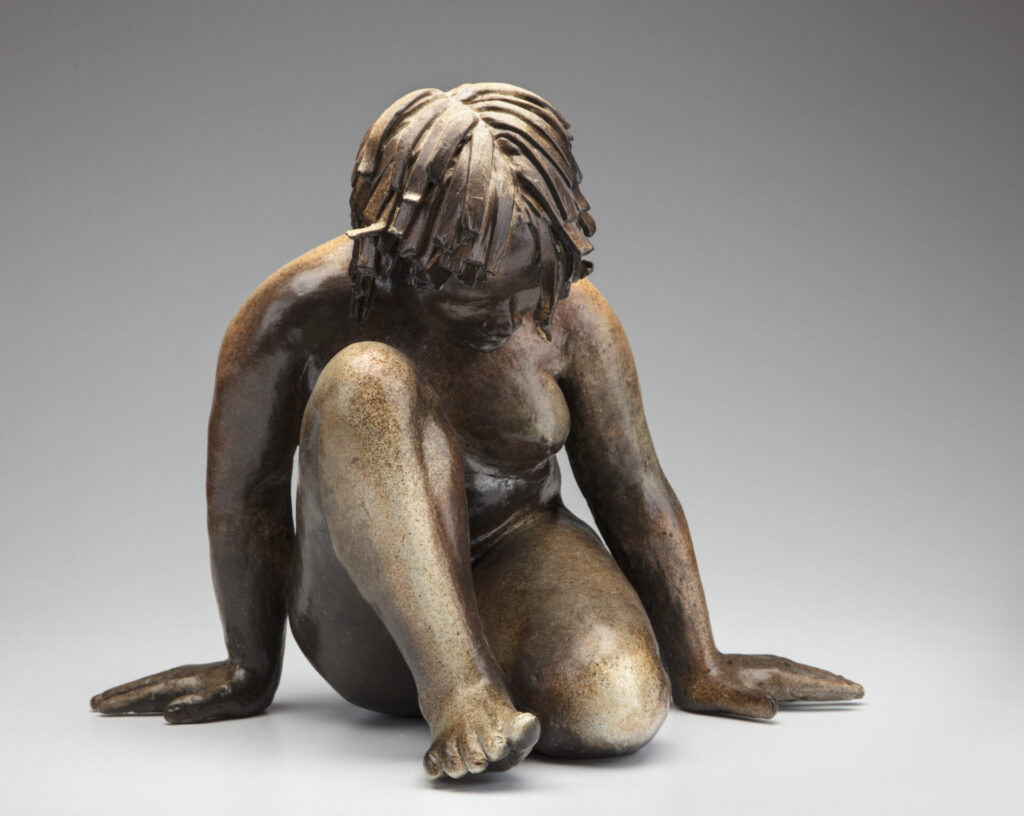
This year we are excited to partner with the Department of Art History at the University of Kansas to provide background and insight on participating artists and their work. David Cateforis, Department Chair and Art History Professor, leads graduate students enrolled in the course Art Here, Art Now as they select and research some of the artists participating in the Art Auction.
Emaline Maxfield, MA student in Art History at the University of Kansas, on Lauretta Hendricks-Backus
Lauretta Hendricks-Backus’ sculpture Woman contemplating or contemplating women invites close looking. The small porcelain figure, just 16 inches tall, crouches with her arms firmly planted at her sides; one leg is folded under her nude body while the other bends upward, the knee almost meeting her downturned head. A mess of stylized hair, the strands flattened into rectangular bands, obscures her face, and to glimpse a view of it, the adult viewer must squat and look up. This maneuvering alters the relationship between object and viewer. Rather than seeing her from above or head-on, the viewer sees her from below, and in the process may imagine that they intrude into this intimate moment.
The thoughts that weigh down her mind seem to manifest themselves through colors and textures on her body’s surface. The sculptor initially finished the work with a dark brown glaze. She then sprayed an oatmeal glaze on certain body parts, including the figure’s knees, right calf, upper back, and shoulders, resulting in an uneven texture. These areas of her body seem worn away as if by her rumination, physical markers of an interior process.
Not only does Hendricks-Backus’ sculpture probe the rich interplay between opposites—seen and unseen, internal and external—but the title does as well, evoking the interplay between singular and plural, subject and object. Does the sculpture depict a specific woman or an allegorical figure that embodies an idea? Can it represent both? Hendricks-Backus provides no definite answer. The viewer is left wondering, contemplating the sculpture before them and the rich ideas that it brings to the surface.
